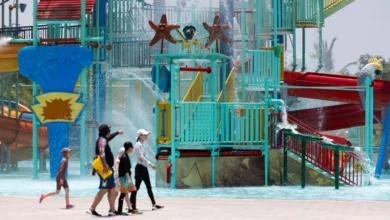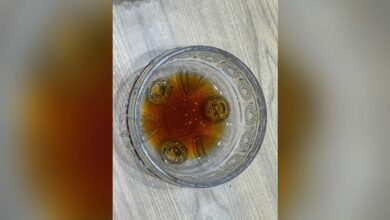
It took Pham Thi Thuan a while before she could muster the courage to fetch water from across the ditch where 170 of her neighbors, most of them women and children, were killed by US troops during the Vietnam War.
“When I heard cats mewing at night, it sounded like those babies were still crying,” said Thuan.
On March 16, 1968, 504 people were killed by American soldiers in Son My, a collection of hamlets between the central Vietnamese coast and a ridge of misty mountains, in an incident known in the West as the My Lai Massacre.
It was the worst recorded US war crime committed in Vietnam, but preparations for a 50th anniversary ceremony at the site, now a memorial to the victims, are low key.
The ceremony falls just one week after a landmark visit by a US aircraft carrier to the nearby port city of Danang, testament to warming ties between the former foes.
Because of those better relations, Vietnam is not dwelling on the pain of the past, a senior Vietnamese government official told Reuters.
“Vietnam wants to close the door to the past and look to the future,” said the official, who declined to be identified, citing the sensitivity of the issue.
Dang Ngoc Dung, deputy chairman of the Quang Ngai Province People’s Committee, said Vietnam wanted to “befriend everyone now”.
“We won’t let anyone harm us again,” said Dung.
DARKNESS, SILENCE
Vo Cao Loi was 16 when he saw American helicopters buzz low over his family’s house on the clear, sunny morning of the massacre.
That was not unusual, Loi said. American troops often passed through the area in then US-backed South Vietnam.
“We were used to it,” said Loi. “But we didn’t expect them to kill everybody.”
Loi’s mother gave him a bag filled with rice and spare clothes and told him to hide.
He watched beneath coconut trees by a river as US troops dragged women and children out of their houses and shot them.
“I could usually see my house from where I was hiding, but there was smoke everywhere. All I could hear were explosions, and the ground was shaking,” said Loi, who worried that US soldiers were throwing grenades into village shelters.
“I was hoping I was wrong, but it turned out I was right”.
Loi’s mother, older sister and her five-month-old son were killed by a grenade tossed into their shelter.
It was not until 3 p.m. that day that the shooting stopped.
“Only then did the survivors start crying and wailing,” said Loi, who lost 18 relatives in the massacre.
There were not enough people left to take the dead to the cemetery, Loi said, so Vietnamese guerrillas helped him bury his family in the grounds of their home.
“Everything happened in darkness and silence in fear the Americans would come back”.
Loi joined the Viet Cong guerrillas after the massacre and fought until the end of the war in 1975.
He and his wife now run a coffee shop in a leafy courtyard in Danang filled with photos of trips to France with his children, and a book documenting former US president Barack Obama’s trip to Vietnam in 2015.
“Vietnam and the US have become partners that trust each other,” said Loi.
“Nobody wants war.”




